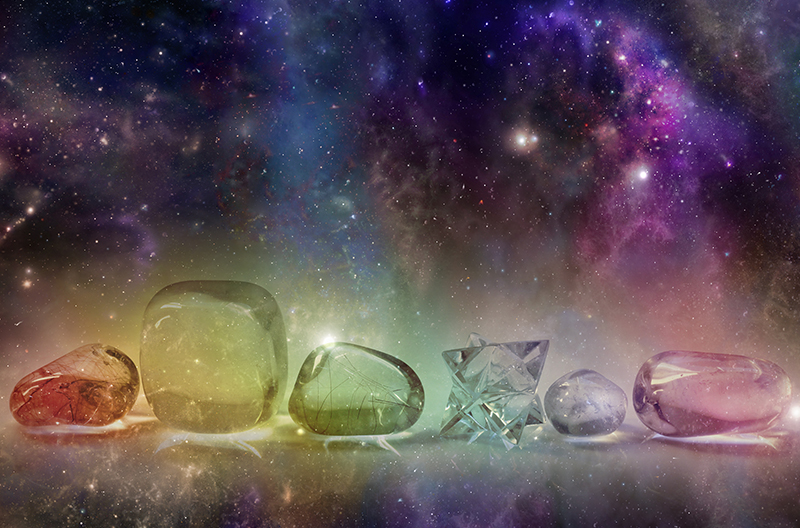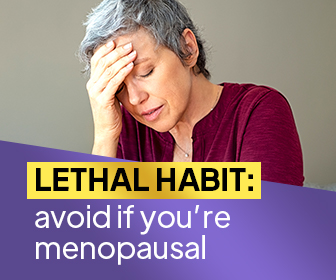Have you ever wondered why red is considered a “power color?” Or why it is that blue skies always seem to lift our mood? Well, you’re not the only one. For centuries healers and philosophers have studied the impact that color can have on our minds and bodies. In this article, we’ll tell you everything they’ve learned.
We’ll introduce you to the therapeutic method of color therapy and how it works. You may be feeling doubtful about its legitimacy – but just keep reading to find out why it’s the real deal. Then, we’ll discuss the specific benefits of each color. That way, you can use this important information in your own life.
What Is Color Therapy?
Let’s begin with the basics – what is color therapy? Simply put, color therapy (or chromotherapy) is a type of healing practice that uses certain colors to heal different ailments of the mind and body. Its origins go back thousands of years in places as far away as China, Egypt, Greece, and India. Healers in these cultures painted healing rooms in various colors, covered windows with cloth dyed in specific colors, and hung crystals to break up sunlight shining into the room.
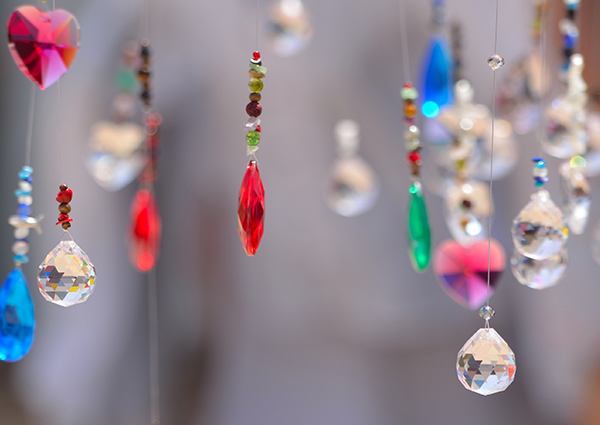
Later breakthroughs in color therapy came in the nineteenth century when Dr. Niels Ryberg Finsen received the Nobel Prize after successfully treating skin lesions with ultraviolet (UV) light. However, to this day, color therapy has not gotten much credit from the mainstream medical community.
Now, you may be wondering how color therapy works. As you may already know, color is made up of different wavelengths of light that become visible when reflected off the surface of objects, particles, and molecules. The surface of the object absorbs some of the light frequencies, while others bounce back. The frequencies it reflects are what we perceive as color when the vibrations of these wavelengths hit our eyes.
If they are between around 400 and 700 nanometers of light, these wavelengths are visible. But there are also invisible wavelengths of light that affect us. Color therapy practitioners understand this basic scientific principle that color is made up of light and energy. In their practice they rely on the specific frequency and vibration of each color to change the energy within the body. They believe this change in energy can have a profound effect on mood, mental health, and even physical well-being.
The theory is that each color’s different frequencies have a therapeutic link to certain physical and emotional states. For example, blue is believed to be a cold, calming color, which can be used to treat heat-related conditions in the body (such as burns). It is also associated with calmness, relaxation, and cooling. In theory, it would decrease inflammation and benefit our circadian rhythms (the biological process associated with work and rest patterns).
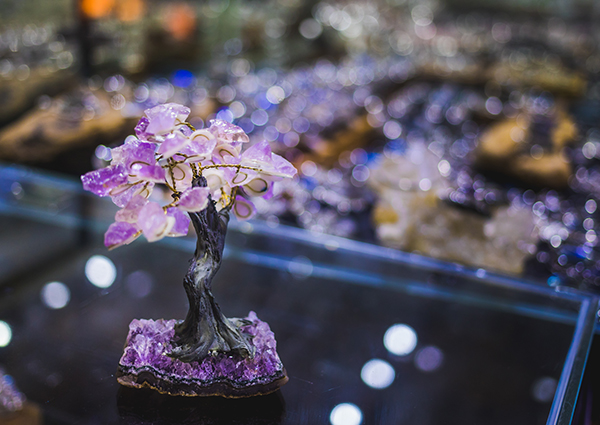
However, color therapy is not always as simple as looking at a color and changing your mind and body. Experienced and educated color therapists treat clients using detailed combinations of different factors. These factors include brightness, hue, and saturation of the color, the duration of viewing time, the angle of viewing, the client’s visual depth perception, and the emotional state of the client when viewing the color.
For those in the mental health field, color therapy is especially promising. Because color is associated with specific emotions, the theory is that certain colors can bring out certain emotions. Practitioners in this field cite results which include quick and effective relief of long-term depression, post-traumatic stress, panic disorder, and seasonal affective disorder (SAD).
Does Color Therapy Really Work?
Some people are skeptical as to whether color therapy really works but there is strong evidence originating from the medical field that it does, in fact, have powerful effects. Here’s how those medical professionals explain it: It is a well-known fact that everything in the universe exists as energy and radiates electromagnetic waves of specific wavelengths. Each object has its own unique frequency, or vibrational energy – this includes the organs and cells in our bodies.
In a perfectly healthy body, the energy of every cell and organ vibrates at a frequency that harmonizes with the frequency of the other ones. But sometimes age, disease, injury, or illness can cause a part of the body to vibrate at a different rate than its usual state of energy, and thus not be in harmony with the rest of the body.
This concept is applied by exposing the eyes or skin to light, since they are known to absorb it. The energy vibrations of the color used go into the body and begin altering the vibrations. The idea is that the vibrations will be balanced out, restoring each organ to its healthiest energy level.[1]
These theories are supported by modern technology, as demonstrated by Kirlian photography. This Russian imaging technique captures the colors emitted by bodies. These colors make up a vibrational energy field called the aura. The aura can show unhealthy imbalances in our bodies’ energy that could lead to disease. In this way, this technique is used as preventative medical care.[2]

If you’re still feeling skeptical, you should know that there are well-documented historical cases in which color therapy was used as an effective treatment. In 1892, Dr. Niels Ryberg Finsen reported that he had successfully used red light to prevent scar formation in cases of smallpox. As recently as the 1950s, it was discovered that neonatal jaundice, which was common and sometimes deadly, could be successfully treated by exposure to sunlight. Later, it was discovered that white light also achieved the same result.[3]
In the end, blue light was determined to be the most effective and least hazardous treatment for neonatal jaundice. Today, bright, full-spectrum light is currently being used to treat various forms of cancer, seasonal affective disorder (SAD), anorexia, and bulimia nervosa, as well as alcohol and drug dependency.
Most impressively, a newly developed therapy called photodynamic therapy (PDT) uses light to diagnose and treat cancer. Thomas Dougherty, who developed PDT, explains that photosensitive chemicals injected into the body will build up in cancer cells. When an ultraviolet light is shined on them, cancer cells can then be identified. PDT then uses red light, whose longer wavelength let the light go even deeper, to activate those chemicals. Over 3000 people have been treated using this technique thus far.[4]
What Can Be Healed with Color Therapy?
At this point, you may be wondering what specific conditions chromotherapy can help with. Research in this field is still growing, but thus far color therapy has been very effective in several different areas. It jump starts the tired and diseased body and mind, helping with lots of medical issues.
First, color therapy is extremely useful in the mental health field. Patients suffering from depression, post-traumatic stress disorder (PTSD), panic disorder, and seasonal affective disorder (SAD) have experienced relief using color therapy. Additionally, the mental health field has a term called “flooding,” which refers to the mental process in which emotions suddenly take over a subject’s mind. This makes it difficult to process logically. Research has shown that color therapy can assist in relieving flooding, as well as other states of mental confusion and overactivity.[5]
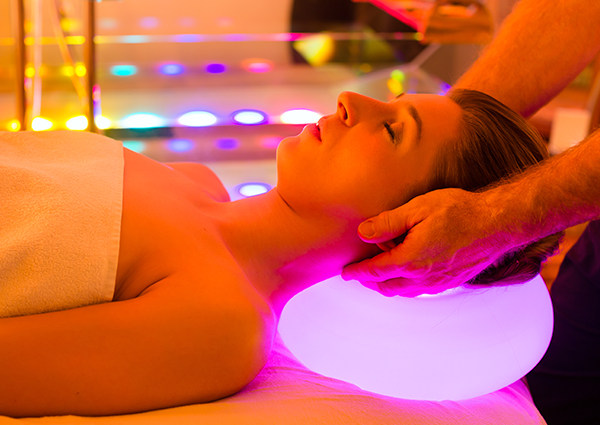
But it’s not just mental health that color therapy can help with. Medical professionals have also used color therapy to treat painful autoimmune disorders like osteoarthritis, rheumatoid arthritis, chronic fatigue syndrome, and fibromyalgia. They have done this by resetting the brain patterns associated with these diseases. Those who do not receive immediate relief from the inflammation, muscular spasms and cramps, and pain associated with these conditions after their first treatment usually still see drastic improvements in sessions thereafter.
Chromotherapy also helps with a patient’s energy levels, circulation, blood pressure, and hemoglobin levels. For this reason, it is recommended for anemia and other blood-related conditions. It can even affect the hormones which regulate the thyroid, ovulation, menstruation, lactation, and sexual desire.
Color therapy also affects the respiratory system by stimulating the lungs. Even the digestive system can benefit from color therapy treatments. Various color combinations can be used to speed up digestion and aid in stomach and intestinal health. Your skin can also benefit, as color treatments can help the pores and promote healing of scar tissue. Finally, chromotherapy is quite effective in the treatment of addiction to alcohol and other drugs.
Of course, not everything can be treated with color therapy. Even those who highly recommend the practice also understand that using a combination of approaches is the most effective. They explain that using the energy systems in the body to heal, as with chromotherapy, is just one way of approaching health. Other more conventional approaches apply therapy through the use of the other systems, such as the nervous and circulatory systems. For this reason, these approaches work well with color therapy. A combination of all of them is generally the most effective for achieving and maintaining optimal physical, mental, and emotional health.
Which Colors Are Best for Healing?
Now, you may be thinking that your favorite color will help you the most in color therapy. But in reality, it’s not just any color that can be used. Chromotherapy uses only select colors that have specific vibrational frequencies. Experts in the practice explain that there are seven colors which are most beneficial for healing: red, orange, yellow, green, blue, indigo, and violet.[6]
Red
Red is a hot color with long, slow light frequencies that penetrate deeply. Red is generally understood to be stimulating and is therefore used the most to treat fatigue, paralysis, congestion, or a general lack of vitality. Red is also great for the skin, helping wounds and scar tissue to heal, fighting conditions like acne and eczema, and staving off the effects of aging. It does so naturally through a boost in collagen formation. Red can also increase the flow of blood, assisting with conditions like anemia and poor circulation.
Orange
Although not quite as hot as red, orange is also a warm color. It is associated with joy and creativity. When used correctly, it is expected to enhance both mental and physical energy. Orange assists with medical conditions by strengthening the immune system, lungs, and kidneys. It is also very helpful to the digestive system by stimulating appetite, relieving gas, soothing irritable bowels, and improving the assimilation of food through its positive effects on the spleen and pancreas.
Yellow
Much like red, yellow is a hot color, known for its stimulating and energizing effects. It has a cheering influence and can help with mental concentration. Yellow also stimulates the immune system, energizes muscles, and activates the lymphatic system.
Green
Green, a combination of blue and yellow, is a balancing color with a subtle sedative effect. It relieves stress, strengthens the immune system, detoxifies the body, and has an antibacterial effect.
Blue
Blue, as you might expect, is a cold color which calms, relaxes and cools the mind and body, relieving tension in the neck and shoulder areas. Like green, it has antiseptic and antibacterial properties, and its relationship to the sky means it has the ability to affect the body’s natural circadian rhythms. Its coolness helps to soothe and heal burns. It also has a constricting quality, helping to shrink back tissues and dry secretions.
Indigo
Indigo, like blue, is a cool color which can be used to treat conditions involving heat in the body. For this reason, it serves as an anti-inflammatory and antibacterial. It is calming to the nerves and great for the integumentary system. That means it reduces swelling in wounds, assists in the healing of various boils and skin ulcers, shrinks tissues and dries up secretions, and can help with other skin conditions as well.
Violet
The final color, violet, is also a cooler color with calming effects. It can improve memory, help with pituitary and pineal imbalances, and generally soothe the mind and nervous system. Some suggest that violet can help subjects overcome sleep disorders as well as feelings of isolation or loneliness.
Summary: What Should You Do Now?
Color therapy, or chromotherapy, has long been understood to help with the health of the mind and body. Modern western science is only just beginning to catch up in this area, but there is plenty of historical evidence that supports it. Practitioners of color therapy use it to treat a number of physical and psychological ailments and have extensively documented what they understand to be the best practices of color therapy.
Action Steps: Tips for Making Color Therapy Work for You
If you want to see the benefits of color therapy in your own life, here are a few steps you can take to give it a try:
- Use color therapy to power up your life. Want to feel powerful and strong? Opt for red lipstick, or pair a red tie with your power suit for your next big meeting.
- Bring on the happiness! If you’re feeling down, try incorporating more orange in your life. You could wear it, or even carry around a swatch of it to look at and touch to your skin from time to time.
- Use color therapy to slow down and restore calm in your life by painting walls in your home in calming colors like blue, violet, and green.
- Remember what’s important! Have you ever wondered why legal pads and post-it notes are yellow? It’s because yellow improves memory. Now, go out and get some yellow paper to write down all of your most important notes and reminders!
- Interested in delving even deeper? Seek treatment from a professional color therapy practitioner.
Now it’s your turn. Do you find yourself in need of more energy, happiness, and power in your life? Or perhaps you are searching for more calm and relaxation? Are you looking for a way to improve the medical treatments you’re already receiving? All of these are great reasons to try color therapy and see if it works for you!
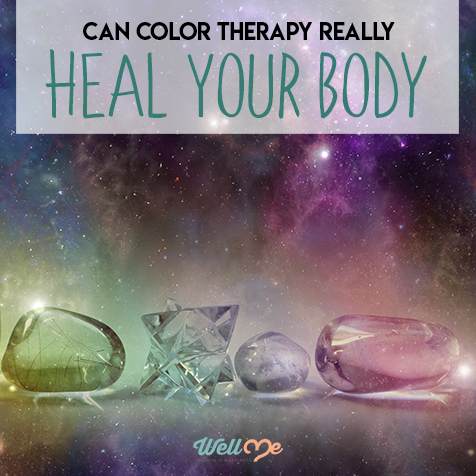
References
- [1] http://www.kashima-acupuncture.com/wp-content/uploads/2017/07/405f1d7e4603df76d6a43918b9267495.pdf
- [2] https://www.lightstalking.com/what-is-kirlian-photography-the-science-and-the-myth-revealed/
- [3] https://www.nobelprize.org/nobel_prizes/medicine/laureates/1903/finsen-bio.html
- [4] https://www.ncbi.nlm.nih.gov/pmc/articles/PMC1297510/
- [5] http://journals.sfu.ca/seemj/index.php/seemj/article/viewFile/43/33
- [6] http://www.deeptrancenow.com/colortherapy.htm
- https://www.cancer.org/treatment/treatments-and-side-effects/treatment-types/photodynamic-therapy.html
- http://www.mylighttherapy.com/color-therapy.html

